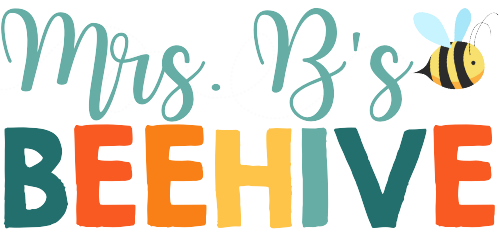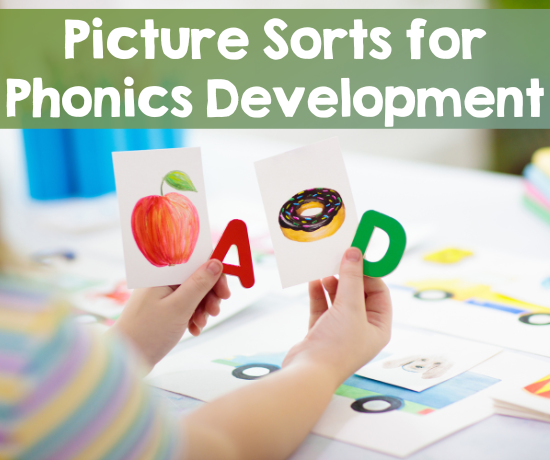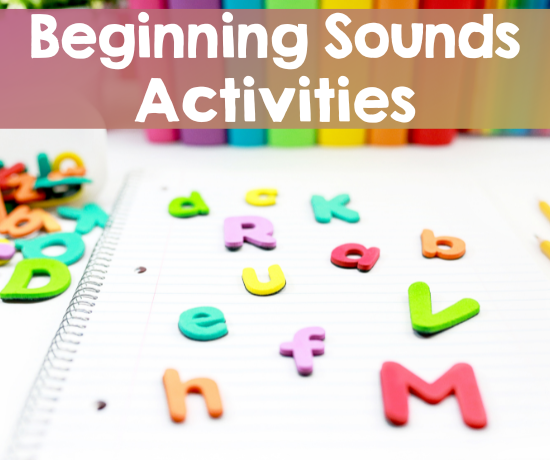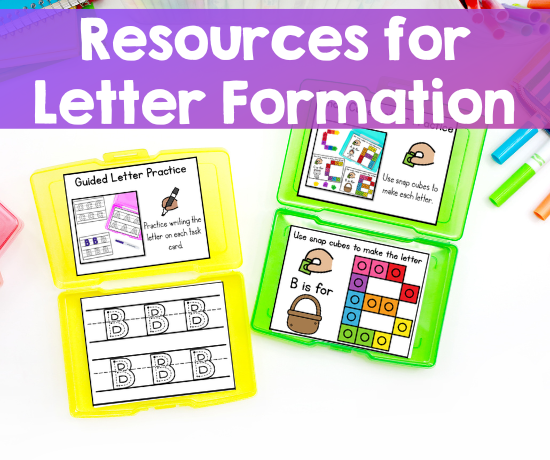As kindergarten teachers, one of our primary goals is to equip our young learners with strong foundational literacy skills that will set them up for success in reading and writing. Phonics instruction plays a crucial role in achieving this goal, and one often overlooked aspect of phonics is teaching ending sounds. In this comprehensive guide, we will delve into the importance of explicitly teaching ending sounds, the progression of phonics skills from beginning to ending sounds to medial sounds, and various engaging activities to reinforce these skills.
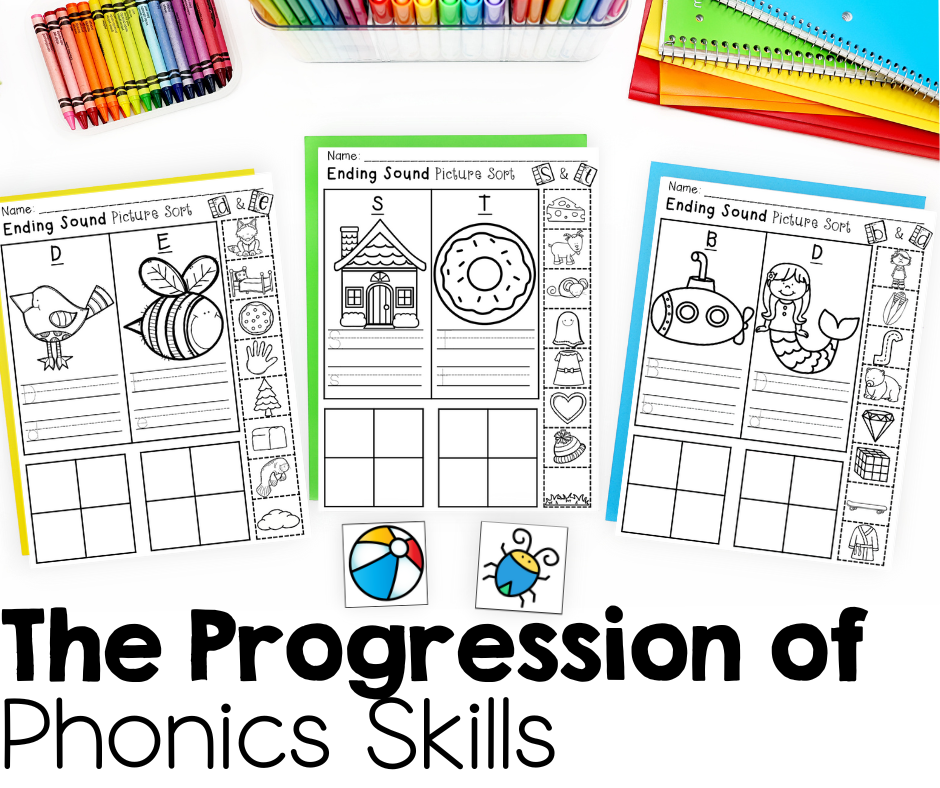
The Progression of Phonics Skills
Phonics instruction in kindergarten typically follows a well-structured progression, moving from basic to more complex skills. Understanding this progression is essential for effective teaching:
- Beginning Sounds: At the start of the school year, kindergarten students usually begin with identifying and producing beginning sounds. They learn to recognize the first sound in words and differentiate between words that start with different sounds. This step sets the foundation for understanding phonics.
- Ending Sounds: After mastering beginning sounds, it’s time to move on to ending sounds. Ending sounds are the final sounds heard in words. Explicitly teaching this skill helps students understand how words are constructed and boost their decoding abilities.
- Medial Sounds: Once students are confident with beginning and ending sounds, they progress to identifying medial or middle sounds in words. This skill involves recognizing and manipulating the sounds that occur between the first and last sounds in a word, which is vital for spelling and reading fluency.
Once students have these sound isolation skills mastered they can move on to more challenging reading and writing skills!
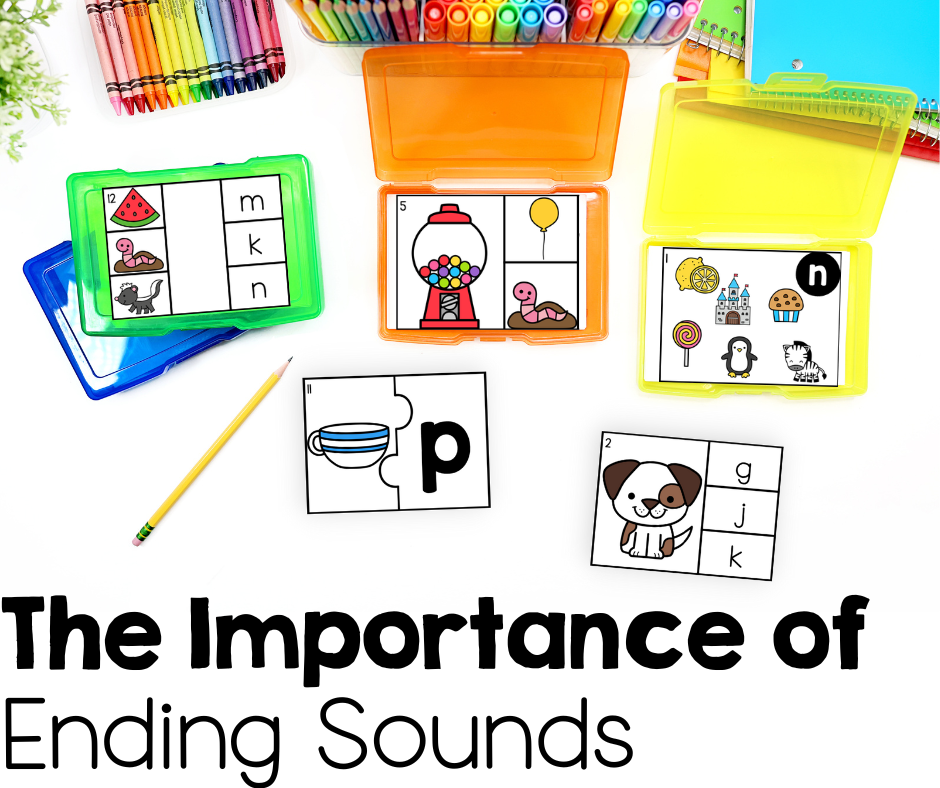
The Importance of Ending Sounds
Why should we pay special attention to teaching ending sounds? Here are several compelling reasons:
- Improved Decoding Skills: Proficiency in identifying ending sounds enhances a child’s ability to decode unfamiliar words while reading. By recognizing the ending sound, they can make educated guesses about the entire word.
- Enhanced Spelling: Understanding ending sounds contributes significantly to spelling accuracy. It helps students spell words correctly by identifying and applying the correct final sounds.
- Vocabulary Development: Teaching ending sounds introduces students to new words and expands their vocabulary. This exposure to a variety of word endings helps students make connections and understand word families.
- Reading Comprehension: Strong phonemic awareness, including ending sounds, is fundamental to reading comprehension. When students can dissect words into their individual sounds, they are better equipped to comprehend the text they are reading.
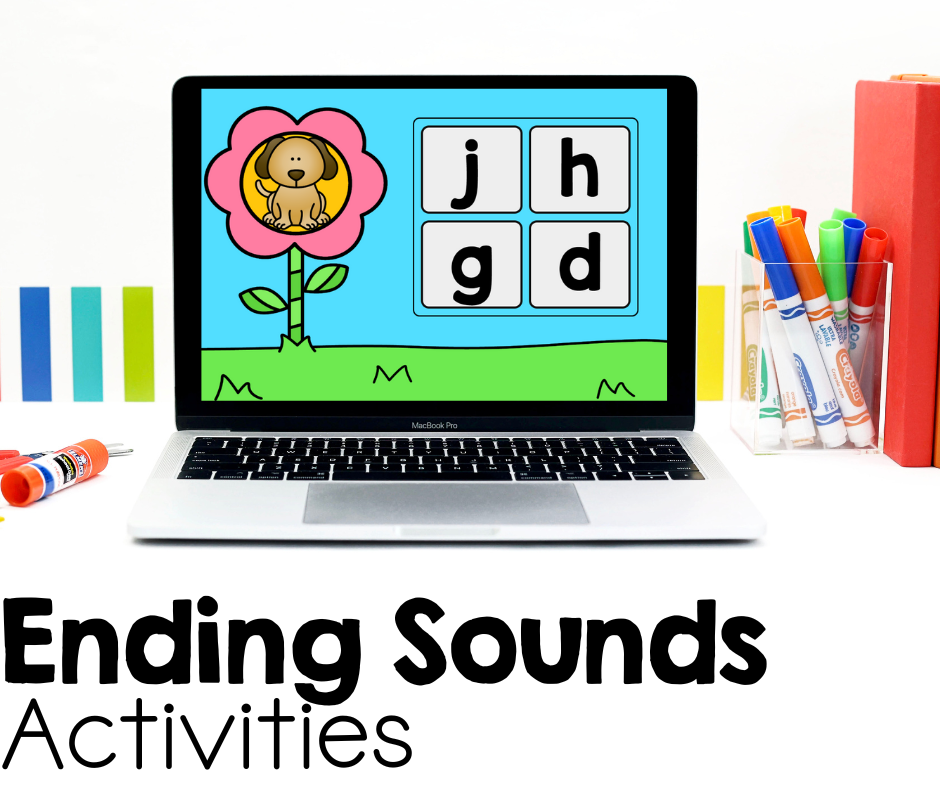
Activities for Teaching Ending Sounds
Now that we understand the importance of teaching ending sounds, let’s explore some engaging activities to reinforce this skill in the kindergarten classroom.
- Sound Sorting: Provide students with a collection of picture cards or objects representing words with different ending sounds. Ask them to sort these items into groups based on their ending sounds, emphasizing the auditory aspect of the task.
- Ending Sound Bingo: Create bingo cards with pictures or words featuring various ending sounds. Call out words or display pictures, and students mark the corresponding ending sound on their cards.
- Ending Sound Puzzles: Craft puzzles with pictures or words and their corresponding ending sounds. Students assemble the puzzles while focusing on matching the ending sounds correctly.
- Rhyming Games: Engage students in rhyming games where they must identify words that share the same ending sound. This helps reinforce the concept and introduces word families.
- Interactive Whiteboard Activities: Utilize technology by projecting ending sound activities on an interactive whiteboard. Students can participate individually or as a group, making learning more engaging.
- Word Family Charts: Create word family charts where students can see and interact with words that share the same ending sounds. Encourage them to add new words they discover.
- Ending Sound Scavenger Hunt: Arrange a scavenger hunt around the classroom or school, featuring objects or words with different ending sounds. Students hunt for these items and categorize them based on their ending sounds.
- Read-Alouds: Incorporate read-aloud sessions that emphasize words with distinct ending sounds. Discuss these sounds with students, encouraging them to identify and articulate the ending sounds they hear. Here are a couple of great books that focus on ending sounds.
These books also come in handy when teaching word families and rhyming words!
If you are looking for easy ending sounds resources to implement into your classroom check out the options below:
Ending Sounds Instruction is Essential!
Explicitly teaching ending sounds in kindergarten is a fundamental step in the phonics instruction progression. By recognizing the significance of ending sounds and incorporating engaging activities into your curriculum, you can empower your students with the skills they need for reading success.
These activities not only reinforce phonics but also make learning enjoyable, ensuring that your students have a strong foundation in literacy that will serve them well throughout their educational journey and beyond.
